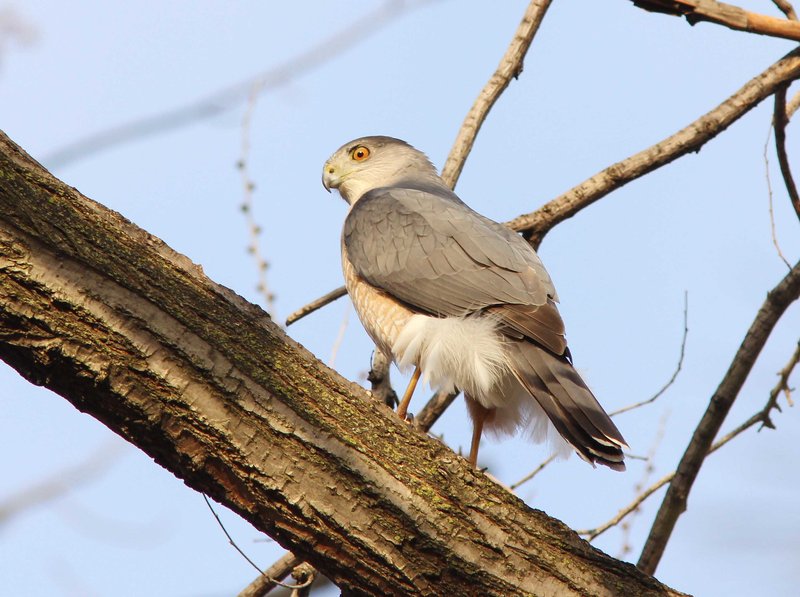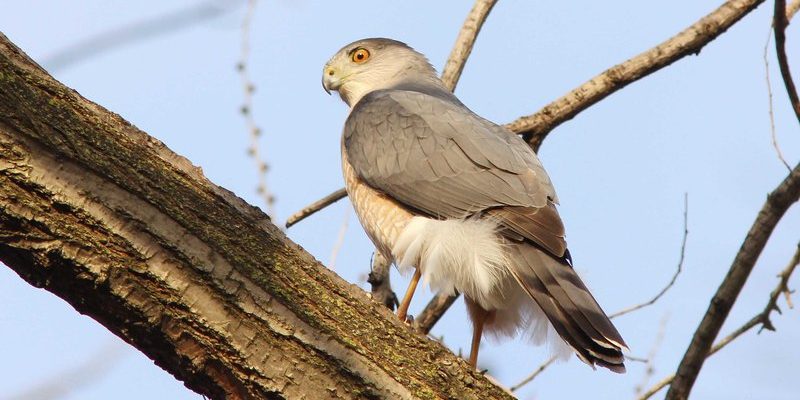
In many local cultures, the Cooper’s Hawk is more than just a bird; it’s a representation of connection to nature and the wild. These birds often find their homes in urban environments, creating a unique blend of the natural world with our everyday lives. This article will explore the cultural significance of the Cooper’s Hawk, delving into how various communities view and revere this captivating creature.
The Cooper’s Hawk: A Brief Overview
Before diving into its cultural roles, let’s take a moment to appreciate what makes the Cooper’s Hawk unique. This medium-sized bird of prey is known for its long tail and sharp wings, designed for quick maneuvers through trees. Much like how a skilled dancer glides across the floor, the Cooper’s Hawk can make sudden turns when chasing after its favorite meal: small birds.
Cooper’s Hawks are found throughout North America, often seen perched in trees or dashing through residential neighborhoods. Their adaptability is impressive, allowing them to thrive in both rural and suburban areas. This flexibility makes them a common sight, drawing the attention of birdwatchers and nature enthusiasts alike.
You might be wondering why a bird of prey has captured the imaginations of so many. The answer lies in its symbolic meanings and the stories tied to it within various cultures.
Symbolism in Native American Traditions
In Native American traditions, birds of prey hold significant meanings, often seen as messengers between the earthly and spiritual realms. The Cooper’s Hawk is sometimes linked with courage and vision. Tribes view these hawks as guides that can help individuals see the truth in challenging times.
The relationship between the Cooper’s Hawk and Native American tribes is deep-rooted. For example, the Ojibwe people regard hawks as powerful beings, and the Cooper’s Hawk, in particular, symbolizes strategic thinking and swift decision-making. They teach that, just like the hawk, one must be aware and quick on their feet to seize opportunities.
These rich stories connect people back to the natural world, emphasizing a respect for wildlife that remains a central theme in many Indigenous cultures.
Folklore and Myths Featuring the Cooper’s Hawk
Folklore surrounding the Cooper’s Hawk can be rich and varied, reflecting human emotions, experiences, and lessons. In some cultures, the hawk appears as a trickster figure, showcasing its intelligence and adaptability. This aligns with stories where the Cooper’s Hawk outsmarts other animals, illustrating themes of wit and resourcefulness.
In other tales, the Cooper’s Hawk embodies the spirit of change. As a master of flight, it symbolizes freedom and the ability to rise above obstacles. In these stories, the hawk often serves as a reminder that change is a part of life—much like seasons changing or the cycles of nature.
Narratives that feature the Cooper’s Hawk remind us that there’s often more beneath the surface of everyday life; just as the hawk is quietly observing from above, we too can learn to take a step back and gain perspective.
The Cooper’s Hawk in Art and Literature
Artists and writers often draw inspiration from nature, and the Cooper’s Hawk is no exception. Its fierce beauty and symbolic meaning make it a frequent subject in various forms of art. For many, this hawk represents the intricacies of life, love, and loss.
Poets might describe the hawk’s flight as a metaphor for human aspirations. Imagine a verse that paints the sky with imagery of the hawk soaring freely, evoking feelings of hope, ambition, or even longing. Artists might capture the hawk’s gaze, portraying its sharp focus as a symbol of determination.
Additionally, some stories and fables use the Cooper’s Hawk to convey moral lessons, further embedding it into the cultural consciousness. Think about how a simple hawk can represent universal truths about perseverance and resilience—it’s fascinating how nature intertwines with human experience.
Scientific Significance and Conservation Efforts
While cultural narratives enrich our understanding, it’s also essential to consider the scientific significance of the Cooper’s Hawk. Ecologically, these hawks play a vital role in controlling populations of small birds, helping maintain a balance within their ecosystems.
However, the Cooper’s Hawk faces challenges, particularly due to habitat loss and environmental changes. Conservation efforts are crucial for ensuring that these majestic birds continue to thrive. Many organizations work tirelessly to protect their habitats and educate the public about their importance.
By understanding both the cultural and ecological side of the Cooper’s Hawk, we gain a fuller appreciation of what it means to coexist with nature. It’s a partnership that requires respect and awareness, much like the one we foster with our friends and family.
The Cooper’s Hawk in Modern Culture
In today’s world, the Cooper’s Hawk remains a popular subject in local culture. Birdwatching has gained traction, and many people take great joy in observing these remarkable creatures. Parks and nature reserves often host events centered around hawk spotting, where enthusiasts gather to share their passion and experiences.
Social media also plays a role in celebrating the Cooper’s Hawk, with platforms showcasing stunning photographs and stories. These images often capture the hawk in dramatic poses against scenic backdrops, further fueling public interest.
You might wonder about the blending of modern life with traditional views. Many people today embrace both nature’s beauty and the lessons learned from age-old stories, illustrating how cultural significance can live on through contemporary expressions.
The Cooper’s Hawk isn’t just a stunning bird of prey; it’s a bridge between wild nature and human culture. From its representation in Native American traditions to its role in modern art and literature, this hawk teaches us vital lessons about courage, adaptability, and respect for all living beings.
As we deepen our understanding of the Cooper’s Hawk, let’s remember to apply these lessons in our own lives. Whether through storytelling, observation, or conservation efforts, we can honor this remarkable bird and the rich tapestry of cultures that celebrate it. Just like the Cooper’s Hawk watches over us, we too can learn to navigate the world with vision and purpose.

